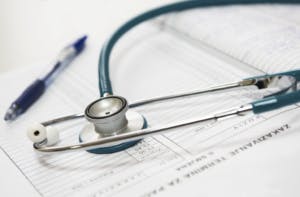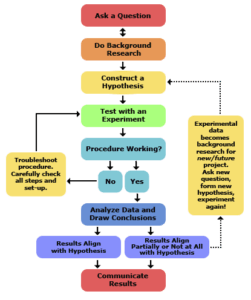
Prior to the COVID19 outbreak, the average person may have never heard the term “evidence-based” but this term has been utilized in the medical field for decades. When we say that our clinical practice in physical therapy is evidence-based, we mean that the treatments, techniques, and clinical decisions we make are based on the best research and clinical experience available. The same applies to MDs prescribing specific drugs and vaccines to combat illness, surgeons choosing specific surgical procedures, dentists applying topical treatments to prevent cavities, nurses wearing special protective gear to prevent infection, and so on.
So where does the “evidence” come from? First, let’s consider the alternative. Non-evidence-based medicine might use intuition, tradition, inconsistent anecdotes, personal histories, unsystematic clinical experience, etc. to inform diagnosis and treatment decisions. Prior to the discovery of the scientific method, these were the tools healers had to work with. If something worked once, perhaps it would work again and over time, they developed a list of “cures” for various ailments. Some legitimately helped, many did not. Sometimes the cures were worse than the original illness or injury. For example, during the 1918 Spanish Flu pandemic, aspirin was found to help with fever. However some patients died from aspirin toxicity when given large doses because we knew so little about that new drug.
We’ve come a long way in medicine since the days of bloodletting, non-antiseptic surgery, and lobotomies. This is because most medical practice today is based on research using the scientific method. So what is this method? (Adapted from Live Science.)
The steps of the scientific method go something like this:
- Make an observation or observations.
- Ask questions about the observations and gather information.
- Form a hypothesis — a tentative description of what’s been observed and make predictions based on that hypothesis.
- Test the hypothesis and predictions in an experiment that can be reproduced.
- Analyze the data and draw conclusions; accept or reject the hypothesis or modify the hypothesis if necessary.
- Reproduce the experiment until there are no discrepancies between observations and theory. The reproducibility of published experiments is the foundation of science. No reproducibility – no science and therefore no evidence.
Some key underpinnings to the scientific method:
- The hypothesis must be testable and falsifiable. Falsifiable means that there must be a possible negative answer to the hypothesis.
- Research must involve deductive reasoning and inductive reasoning. Deductive reasoning is the process of using true premises to reach a logical true conclusion while inductive reasoning takes the opposite approach.
- An experiment should include a dependent variable (which does not change) and an independent variable (which does change).
- An experiment should include an experimental group and a control group. The control group is what the experimental group is compared against.
Here is a visual way to think of the scientific method:

As you can see, the process repeats as we gather more and more data regarding a particular question. Additional research helps us to reach conclusions we can apply to activities in the everyday world. For example, years ago in physical therapy we used to administer ultrasound massage to patients with low back pain. The patients may have felt better after having some warm gel massaged into their low back muscles, but was the treatment affecting the cause of their pain? After many research studies, we now believe that ultrasound likely has no significant effect in the overall cure of low back pain. So nowadays, we rarely apply ultrasound because we have other more effective treatments. Does that mean that ultrasound never helps? No, but it may not be the best use of our limited time with patients. Deciding whether to use something like ultrasound is part of our clinical reasoning, an important part of our treatment choices; but that’s a topic for another time.
Through the scientific method, we hope to weed out what doesn’t work, and focus on what does. We then build on the most effective treatments and as science advances our understanding, we are able to cure illnesses and heal injuries that were untreatable in the past. Whether it’s wiping out smallpox with vaccines or reversing heart disease with changes in diet and exercise, the scientific method helps to improve our health and save our lives. However, like everything human-made, it’s not perfect. In the next installment of this series, we will look at Levels of Evidence to learn more about why some research studies are flawed or skewed, as well as other ways in which the scientific method fails to fully answer our questions.
If you’d like to experience the difference evidence-based, hour-long, physical therapy sessions can make resolving your pain or healing from injury, call OrthoSport Hawaii at 808.373.3555 for more information on scheduling a free online or in-person consult.
